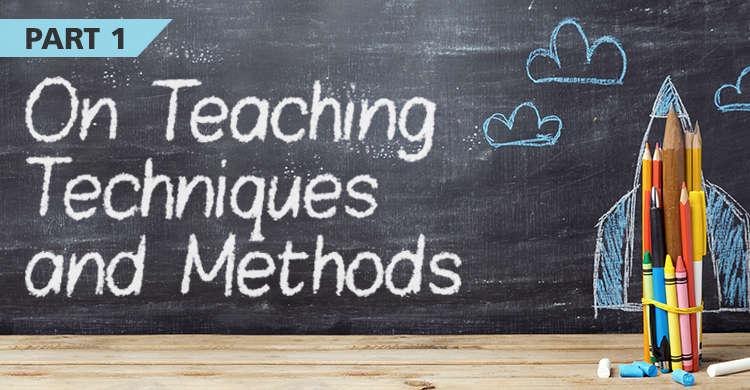Serendipities offer the flights of life. As often happens, as your mind is fluttering around an idea, something inadvertently happens that adds that updraft that you needed. The phrase “head in the sand ostrich,” popped up, (no pun intended) leading to the idea of a flock of six birds, non-judgmental namesakes used as indicators of transfer. To disguise participants in the study, each indicator was given an appropriate bird namesake, ranging from Head in the Sand Ostrich to the Soaring Eagle. These six birds arranged themselves in 2 distinct flight patterns, one simple and sleek, the other complex and camouflaged.
Simple and complex (Perkins and Solomon, 1985) transfer levels, (Fogarty and Pete, 2004) are depicted in the six birds. Automatic, low level, or simple transfer, consists of three levels of transfer evidence with adult learners in the study on how well they transferred learning in a training setting back to their classroom instruction (Fogarty, 1989). Simple transfer is evidenced when driving a car and then driving a U-Haul truck, though different, they are similar enough, skills that the transfer is close or easy. There are three simple levels, Head in the Sand Ostrich, the Drilling Woodpecker and the Look-Alike Penguin. At the other end of the spectrum, remote, far-reaching or complex transfer revealed another three levels of transfer from participants in the study as they applied strategies from the staff room to the classroom. Driving a car in America and driving a Car in Australia with the steering wheel on opposites sides and the driving lanes reversed is mindful or complex transfer. Included in remote or far transfer levels are Jonathon Livingston Seagull, the Carrier Pigeon and the Soaring Eagle (Figure XX).
Figure XX: Six Levels of Transfer and Application of Learning
-
Ollie-Head-In the Sand Ostrich, the Over-looker
-
Dan the Drilling Woodpecker, the Duplicator
-
Laura, the Look-alike Penguin, the Replicator
-
Jonathan Livingston Seagull, the Integrator
-
Cathy, the Carrier Pigeon, the Propagator
-
Sam, the Soaring Eagle, the Innovator
To illustrate the six levels of transfer, the use of music is modeled in a professional development event. The presenter makes his entrance while the iconic theme from the movie Rocky is playing loudly in the background. The goal is to demonstrate how the brain-friendly strategy of music, tapping into emotional awareness of the learner, heightens attention and memory. Following the presentation, participants showed evidence of transfer in their respective classrooms that touched each of the six types of transfer.
Simple Transfer (Automatic)
Ollie “Head-In the Sand” Ostrich: The Over-looker
The head-in-the-sand learner intentionally or inadvertently overlooks the opportunity to actually use the learning or the instructional strategy while experiencing it. When the presenter enters the room accompanied by the music, the “Over-Looker” notices, but doesn’t do anything else with the idea in her classroom. She misses the opportunity for transfer.
Dan the Drilling Woodpecker: The Duplicator
The drilling woodpecker duplicates exactly the same peck at the tree trunk, time after time. There is no change up. Similarly, every time the teacher decides to use music to introduce a new topic or lesson he uses the theme from Rocky, exactly as he learned it in the PD session. He is exhibiting a level of near or simple transfer by duplicating the strategy exactly as learned.
Laura the Look-alike Penguin: The Replicator
With Laura, the look-alike Penguin, the transfer moves from a copycat duplication, to a replication or slight change from the original learning. This teacher uses a different, energizing song to introduce new topics or subjects, but uses it only in that one context, to introduce a lesson, never to end the lesson and enliven a lesson along the way. At the Replicator level of transfer the teacher is customizing the idea, owning it as an activity, but still not applying it strategically in varied contexts.
Complex Transfer (Mindful)
Jonathan Livingston Seagull: The Integrator
Interestingly, the Integrator, often comments on how they have used the idea before, yet, demonstrates a raised consciousness about the potential of music to enhance his teaching. Typically, the Integrator blends the idea, music in this case, into his existing repertoire of instructional strategies. Seamlessly, music becomes part of his classroom and he has a renewed and more acute awareness of its influence on the learning environment.
Cathy the Carrier Pigeon: The Propagator
This level of transfer illustrates a highly proactive stance on transfer. A Propagator recognizes that music can be applied in so many more ways than simply to introduce a subject in the classroom. She propagates the idea of music and uses specific songs in specific situations in her classroom, in the computer lab, the teachers’ lounge and even at home, while her children are doing homework. She is taking this new idea everywhere, as a Johnny Appleseed “propagator”, planting the seeds of her new learning. This level of transfer is, in so many ways, the goal of all teaching- the creative transfer of new information or strategies into diverse situations.
Sam the Soaring Eagle: The Innovator
The soaring eagle takes an idea, and flies with it. Thinking out of the box is the hallmark of this learner. When she watches the presenter come into the room with the theme from Rocky playing, the Innovator imagines using not only music but, an electric light show. Understanding the emotional impact on attention and memory, she assigns students to create a playlist that she will play as background music when creating her lecture videos for their flipped classroom online instruction.
When learners of any age are made aware of simple and complex transfer, they begin to notice their own behaviors in learning situations. In the beginning, they might note when they sense transfer from one class to another. Eventually, they may track the kind of transfer they are using. It takes time, to learn to look for and foster transfer of learning. To promote more attention to transfer of learning, peer partners reflecting on their levels of transfer, through structured metacognitive conversations, will likely deepen the learning.
References
Fogarty, R. (1989) Doctoral Dissertation: From Training to Transfer: the Role of Creativity in the Adult Learner. Chicago, IL: Loyola University.
Fogarty, R. and B. Pete (2007) From Staff Room to Classroom: Planning and Coaching Professional Learning. Thousands Oaks, CA: Corwin Press.
Fogarty, R. and B. Pete (2004) A Look at Transfer: Seven Strategies that Work. Thousands Oaks, CA: Corwin Press.
Perkins, D. and G. Solomon. (1985) Teaching for Transfer. Educational Leadership. Alexandria, VA: Association for Supervision and Development.
Pete and Fogarty’s final post on the Transfer of Learning will appear in May.
[author_bio id=”341″]
[author_bio id=”53″]






